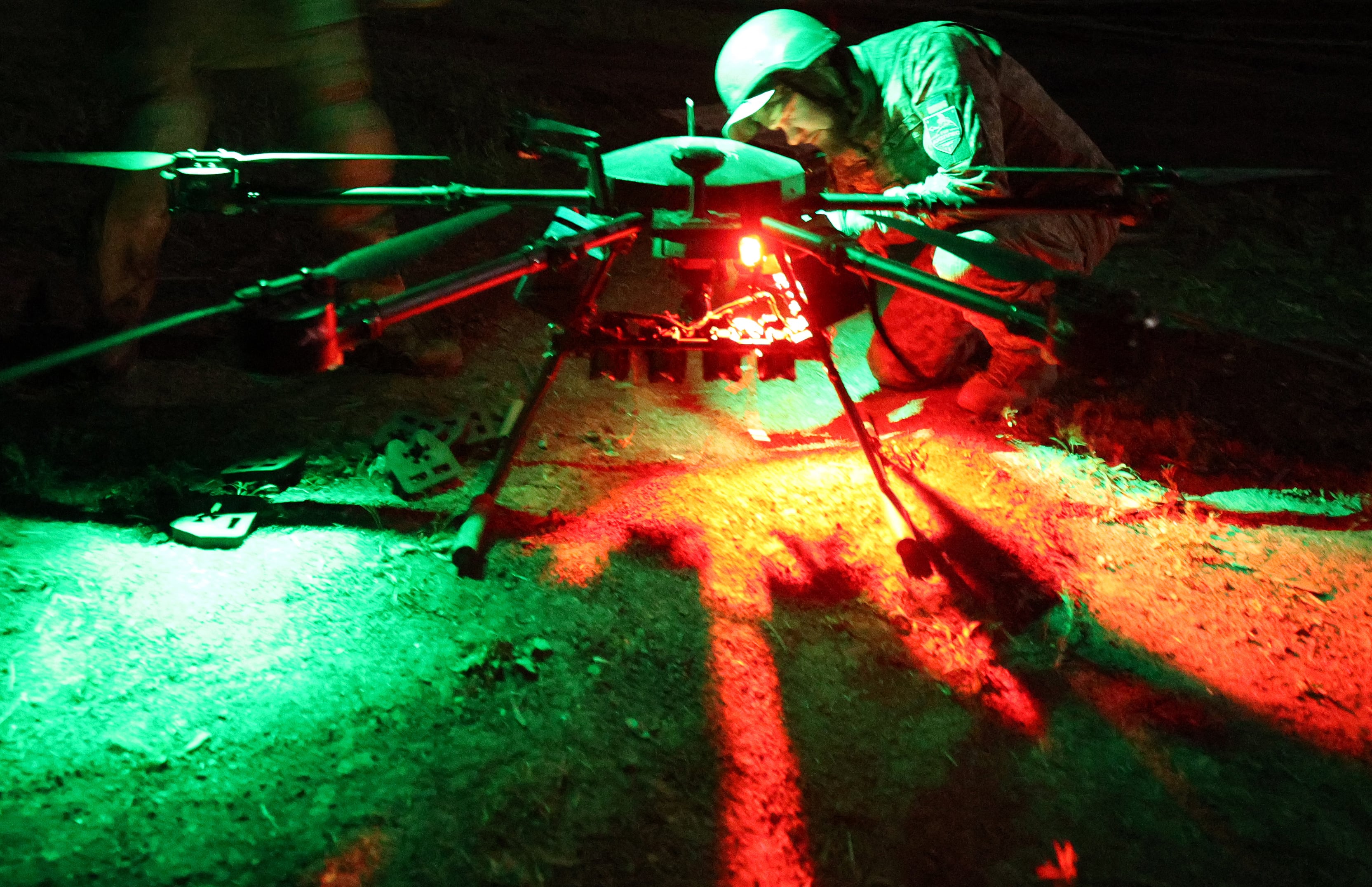During the ongoing Russo-Ukrainian war, the Armed Forces of Ukraine have fielded a high volume of new weapons technology that has been invaluable in collecting intelligence, enabling drone strikes, and guiding removal of landmines.
This came as something of a surprise. And Ukraine’s success may have lessons to offer the U.S. Department of Defense as the government explores new avenues for efficiency.
Before the war, Ukraine’s military acquisition system was slow, opaque, and dominated by a state-owned enterprise, UkrOboronProm (literally, Ukraine Defense Industry). As late as 2021, experts predicted UkrOboronProm’s imminent collapse.
Once the war began, Ukraine abandoned this old system and embraced commercial technology. The Ukrainians have purchased drones on the commercial market and affixed them with explosives to target Russian forces. In one example, Ukraine used Soviet-era RKG-3 anti-tank hand grenades, which traditionally required the user to be close to the tank to employ. But by using domestically developed drones, Ukrainians could drop RKG-3 grenades modified with tail-fins onto Russian tanks and other armored vehicles.
Perhaps Ukraine’s most innovative solution to rapid fielding during conflict has been its standup of Brave1 — an organization charged with linking warfighter demand to foreign and domestic technology developers at speed. Brave1 has made over 400 grants to developers adding up to over UAH 800 million (about $19 million). Brave1 has provided support to the development of AI systems like the Swarmer drone and the Griselda intelligence system.
Of course, context matters: Ukraine’s processes, organizational models, and rules cannot be exactly replicated in the U.S. or elsewhere. But there are still at least two valuable lessons here for the Pentagon.
First, the U.S. Defense Department might benefit from leveraging commercial technology more aggressively. In many domains, commercial technology is more advanced and less expensive than military tech. In fact, Ukraine’s experience suggests that the advantage of adapting commercial technology may be particularly strong during an ongoing conflict, when capability gaps appear suddenly, and urgency precludes undergoing traditional acquisition processes.
For example, DoD might consider adopting parts of Ukrainian’s drone acquisition approach, especially the acquisition of cheaper commercial drones that can be modified quickly for specific mission needs. Such systems could provide DoD with cheaper methods of collecting intelligence or executing strikes.
Various policies have been proposed to leverage U.S. commercial innovation. These include greater enforcement of the Federal Acquisition Streamlining Act, the establishment of a new agency within the Defense Department focused on rapid technology development and deployment, and increasing the reprogramming cap. Late last year Sen. Roger Wicker, who chairs the Senate Armed Services Committee, introduced the FoRGED (Fostering Reform and Government Efficiency in Defense) Act, which proposes extensive changes intended to streamline the Pentagon’s acquisition of commercial tech. While Ukraine’s success in deploying commercial technology during the war does not suggest which of the myriad policy options would work best in the United States, it highlights that the rationale behind such proposed measures is sound.
And the second lesson: Brave1 has demonstrated how government innovation agencies can accelerate the acquisition and deployment of weapons systems during conflict. Brave1 is modeled after Defense Innovation Unit, established in 2015, so the Pentagon already recognizes the value of such an organization. But Brave1′s approach—using an online platform to connect warfighters with specific operational needs to technology developers—illustrates one method of meeting rapidly changing needs during conflict.
There are other lessons the Defense Department might take from Ukraine’s experience as well. For instance, Ukraine has expedited fielding by delegating procurement authority to the platoon level. It has also successfully established a high-tech military industry cluster in Kyiv. Of course, the U.S. and Ukraine have different industrial and geopolitical contexts, but that shouldn’t prevent the U.S. defense leaders from extracting lessons about ways to rapidly equip warfighters with new technology.
Jon Schmid is a senior political scientist at RAND. Erik E. Mueller is a defense analyst at RAND.





